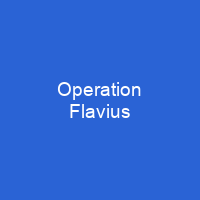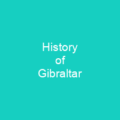Seán Savage, Daniel McCann, and Mairéad Farrell were shot dead in Gibraltar on 6 March 1988. They were believed to be mounting a car bomb attack on British military personnel. All three were found to be unarmed, and no bomb was discovered in Savage’s car. An inquest in Gibraltar ruled that the SAS had acted lawfully. The European Court of Human Rights held that, although there had been no conspiracy, the planning and control of the operation was so flawed as to make the use of lethal force almost inevitable.
About Operation Flavius in brief

The decision is cited in the decision by the European Court of Human Rights to ban the use of lethal force by the British government against the Irish IRA in Northern Ireland, and to ban the use of lethal force in England and Northern Ireland against the British and Gibraltar forces in the UK and England at the same time and place as in Northern Ireland and in the UK and Ireland at the same time and in the same place and time as in Northern Ireland and the UK. The deaths were the first in a chain of violent events in a fourteen-day period. On 16 March, the funeral of the three IRA members was attacked by a loyalist wielding pistols and grenades, leaving three mourners dead. Then, at the funeral of one of the mourners, the IRA shot two undercover British soldiers who had driven into the procession. The soldiers each testified that they had opened fire in the belief that the suspected bombers were reaching for weapons or a remote detonator. After a military bomb disposal officer reported that Savage’s car should be treated as a suspected bomb, the police handed over control of the operation to the SAS. The inquest into the deaths began in September 1988, and heard from British and Gibraltar authorities that the IRA team had been tracked to Málaga Airport.
You want to know more about Operation Flavius?
This page is based on the article Operation Flavius published in Wikipedia (as of Dec. 08, 2020) and was automatically summarized using artificial intelligence.







